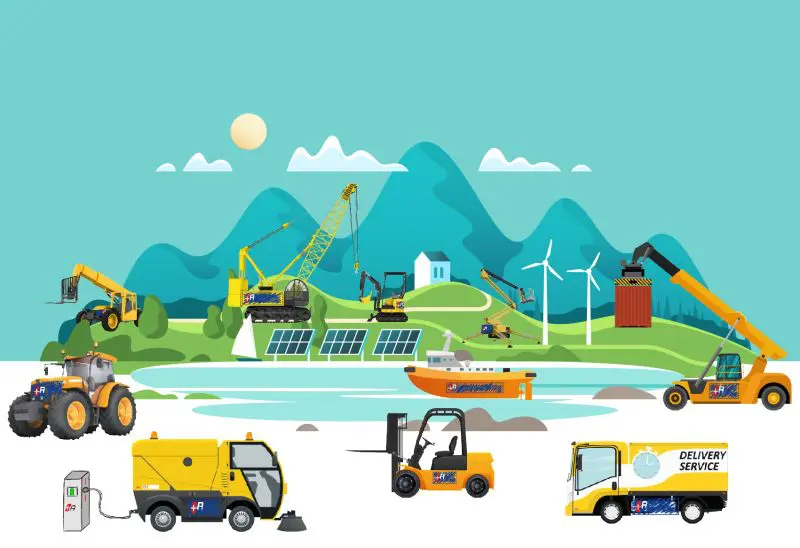The electrification of construction machines

Today we are talking about the electrification of construction machinery, a topic of absolute interest in the current technical and technological panorama.
As is well known, in fact, construction machinery is very widespread and operates under current standard conditions, thanks to the power supplied by an internal combustion engine. Implementation is often entrusted to hydraulic systems that offer great power density (therefore compactness of the transmission components and actuators) and great robustness. However, the interest in systems that can work in closed or confined spaces and the need to reduce emissions, push machinery manufacturers to evaluate hybrid or electric solutions.
The typical starting point is to evaluate the hourly or kilometer energy needs for the endothermic vehicle.
We make it clear right away: this starting point is WRONG!
Why? To understand this we must take a step back and try to see the electrification of a vehicle or machine more as a revolution than as an evolution.
“If I had asked people what they wanted, they would have said faster horses – H. Ford “
The starting point should take into consideration the key element of an electrification project: the electric motor. As known, the electric motor, unlike the internal combustion engine, has a wonderful feature: the stall torque or torque at zero RPM, which is generally similar or equal to the maximum torque. An internal combustion engine, on the other hand, cannot be kept in an IDLE condition at zero RPM.
This characteristic alone would be sufficient to understand the flow rate that an electrical system possesses, upsetting many of the traditional logics: think for example of a crane, where the internal combustion engine is kept running at idle speed in order to be ready to respond by delivering the maximum torque or maximum power where a hydraulic pump needs to be operated. the consumption at idle of the internal combustion engine is effectively zeroed with the electric motor!
In the second analysis it is necessary to make a general consideration on the POWER BALANCE OF SYSTEM: while it is true that the energy density of a liter of fuel (petrol, diesel, methane or similar) is extremely higher than the energy density stored in a volume equal to a liter of lithium battery, it is also true that the complete yields of the distribution chain are significantly higher in the case of the electric.
“If I have seen farther than others, it is because I was standing on the shoulders of giants”. – I. Newton
Therefore, thanks to the fact that the technology of inverters and electric motors is already an extremely advanced and efficient technology, thanks to the development carried out by the manufacturing industry over the years and thanks to the drive towards energy efficiency imposed by the regulations (IE2, IE3 , IE4, …) now widespread, it is advisable to make a serious assessment of the entire drivetrain and powertrain system while starting to tackle an electrification project.
The best results, based on our experience, are achieved where efficient solutions for the part of motors and inverters are identified with a correct electrical sizing of the battery, reconciling high efficiency with the clear need to reduce the impact of the system on the mechanical design. vehicle and on the interface with existing parts (SAE flanges, pumps, actuators, axles).
For these reasons, our first approach towards new projects is always oriented to an overall technical and technological aspect, also relating to apparent commercial and secondary components such as motor notes and inverters.

